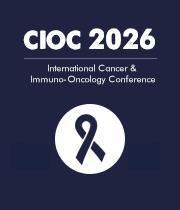Title : tRNA-derived fragment 3′tRF-AlaAGC modulates cell chemoresistance and M2 macrophage polarization via binding to TRADD in breast cancer
Abstract:
Background Drug resistance, including Adriamycin-based therapeutic resistance, remains a challenge in breast cancer (BC) treatment. Studies have revealed that macrophages could play a pivotal role in mediating the chemoresistance of cancer cells. Accumulating evidence suggests that tRNA-Derived small RNAs (tDRs) are associated the physiological and pathological processes in multiple cancers. However, the underlying mechanisms of tDRs on chemoresistance of BC in tumor-associated macrophages remain largely unknown.
Methods The high-throughput sequencing technique was used to screen tDRs expression profile in BC cells. Gain- and loss-of-function experiments and xenograft models were performed to verify the biological function of 3′tRF-Ala-AGC in BC cells. The CIBERSORT algorithm was used to investigate immune cell infiltration in BC tissues. To explore the role of 3′tRF-Ala-AGC in macrophages, M2 macrophages transfected with 3′tRF-Ala-AGC mimic or inhibitor were co-cultured with BC cells. Effects on Nuclear factor-κb (NF-κb) pathway were investigated by NF-κb nuclear translocation assay and western blot analysis. RNA pull-down assay was performed to identify 3′tRF-Ala-AGC interacting proteins.
Results A 3′tRF fragment of 3′tRF-AlaAGC was screened, which is significantly overexpressed in BC specimens and Adriamycin-resistant cells. 3′tRF-AlaAGC could promote cell malignant activity and facilitate M2 polarization of macrophages in vitro and in vivo. Higher expression of M2 macrophages were more likely to have lymph node metastasis and deeper invasion in BC patients. Mechanistically, 3′tRF-AlaAGC binds Type 1-associated death domain protein (TRADD) in BC cells, and suppression of TRADD partially abolished the enhanced effect of 3′tRF-AlaAGC mimic on phenotype of M2. The NF-κb signaling pathway was activated in BC cells co-cultured with M2 macrophages transfected with 3′tRF-AlaAGC mimic.



